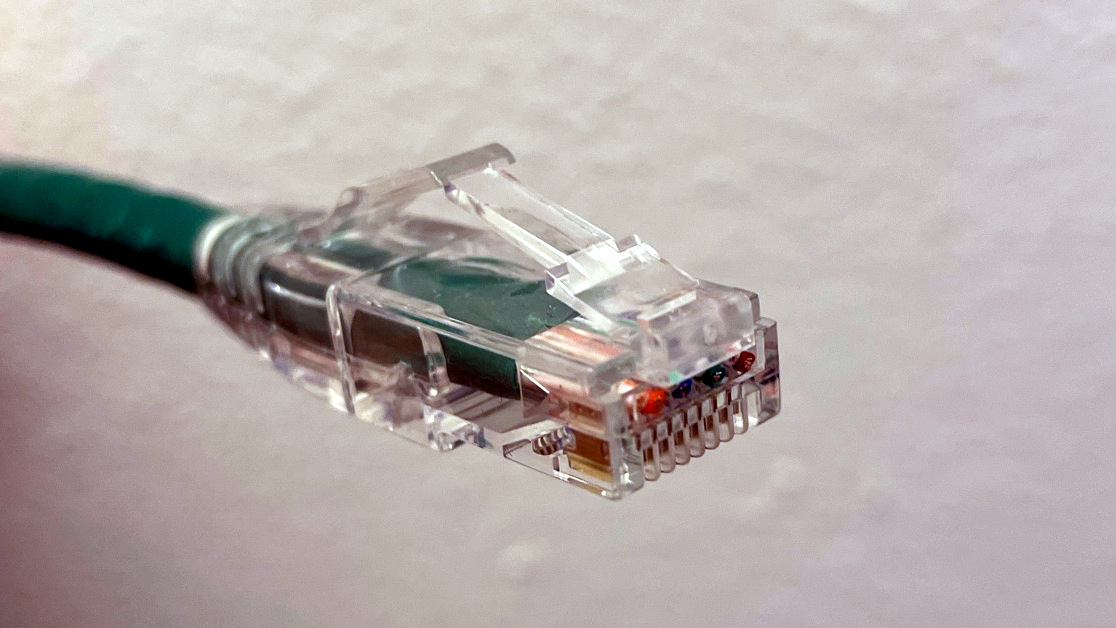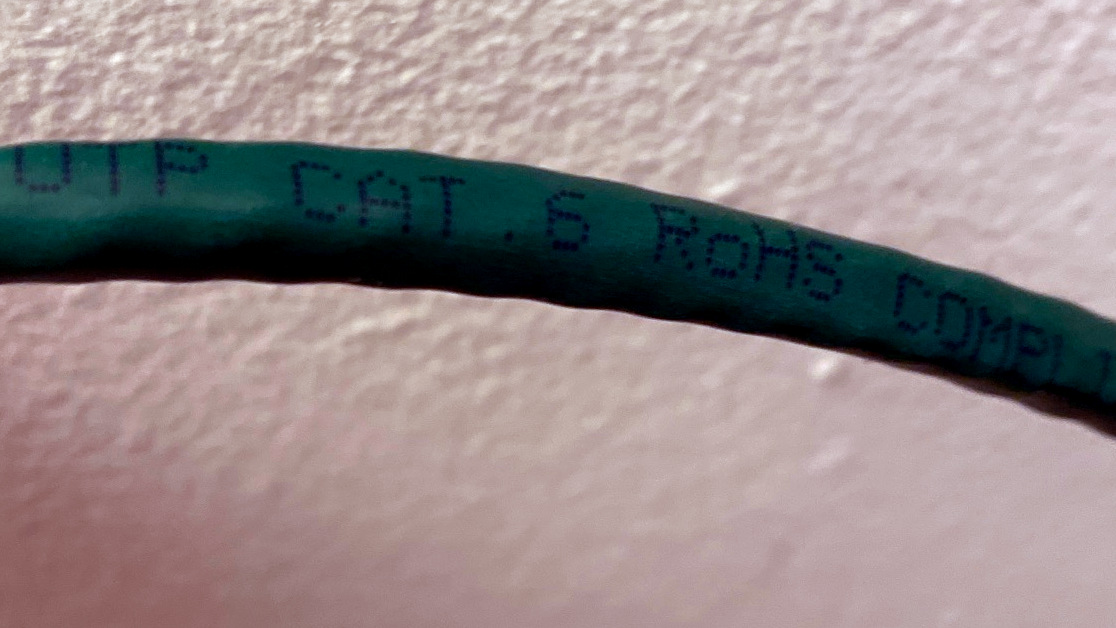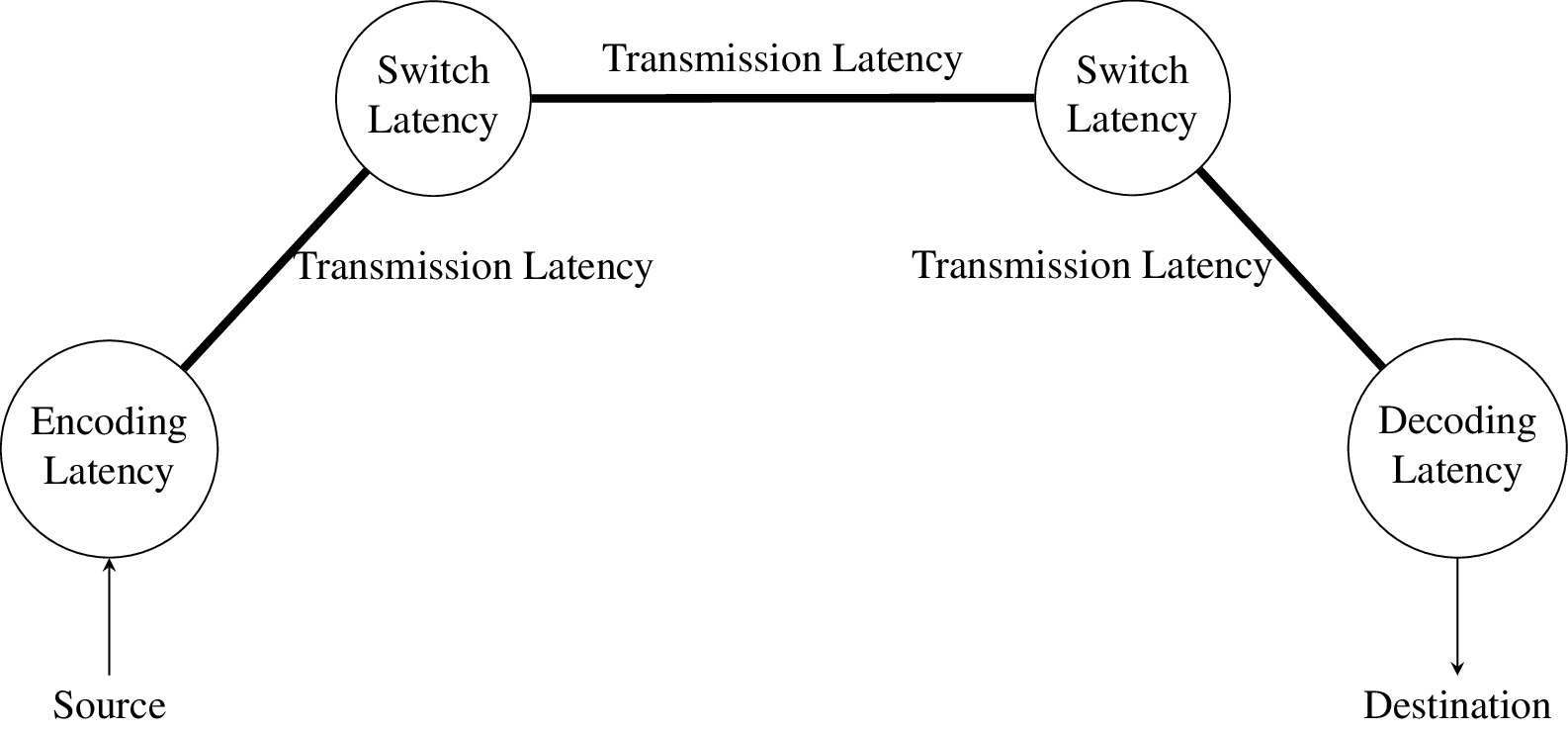Physical Layer
Last, but not least, each data link has its underlying physical layer. It is responsible for how bits are encoded and transmitted as electrical or optical signals or electromagnetic waves.
The technology used limits both the bandwidth and the latency of a network, two performance metrics that are used to characterize networks.
Bandwidth
The network bandwidth of a technology determines how much data can be transferred at any given time via a network connection. It is the theoretical maximum transfer rate (aka data rate) and is measured in bits/s.
The following table shows some examples of Ethernet physical layer implementations, such as 1000BASE-T or 10GBASE-T. Their main difference is the maximum data rate. Both use RJ45 connectors and four twisted pairs per cable. However, 1000BASE-T requires at least Category 5 (CAT5e) cables, while 10GBASE-T requires at least CAT6A twisted pair cabling.
Note
Take a close look at a Ethernet network cable. You will likely find text written on it, which will identify it as CAT5 or CAT6 cable.

RJ-45 connector of an Ethernet cable

CAT6 label on Ethernet cable
A downside of copper cables is that the longer they get, the better they have to be shielded against electromagnetic interference. This limits their range. Typically fiber solutions can be used for longer distances, but use more delicate and more expensive cables.
Technology |
Bandwidth |
|---|---|
Ethernet (copper) 1000BASE-T |
1 Gbit/s |
Ethernet (copper) 10GBASE-T |
10 Gbit/s |
Ethernet (fiber) 10GBASE-SR |
10 Gbit/s |
Ethernet (fiber) 10GBASE-SR4 |
40 Gbit/s |
InfiniBand EDR |
100 Gbit/s |
WiFi 802.11g |
56 Mbit/s |
WiFi 802.11n |
600 Mbit/s |
WiFi 802.11ac |
1.3 Gbit/s |
4G LTE |
300 Mbit/s |
5G mmWave |
1.8Gbit/s |
Latency
Another key characteristic of a network is its latency. The latency is the time it takes for any transmission go from its source to its destination. This time is dependent on multiple factors.
Each technology encodes bits into signals. This process takes time and depending on the technology, additional information might be sent to allow error correction.
Once encoded, the signal must travel through a medium at a fraction of the speed of light (<299,792,458 m/s). Depending on the distance and medium, this adds a specific delay to the transmission. It takes less time for signals to travel from one computer to another if they are located in the same data center vs if they are geographically separated.
Finally, when the signals are received, they must be decoded, which again requires some time.

So in general, the latency of a point-to-point connection with a given technology will be the sum of these delays \(\Delta t\):
However, rarely will a network connection be a point-to-point connection. Most systems will be part of a more complicated network topology. In the simplest case, this is when the connection consists of two parts. Data is received and re transmitted at a intermediate station between the source and the destination. Examples of this can be an Ethernet switch that connects two systems, or a cell tower that connects two mobile phones.

Signal must be re-transmitted to reach final destination

Signal must be re-transmitted twice before it reaches its destination
Each station that needs to be visited adds an additional transmission and the latency to initiate it. So the latency becomes the sum of all of these delays:
High latency is one of the factors that makes WiFi connections unsuitable for high-performance applications. Typical latencies are in milliseconds, while Ethernet has latencies in the 10s or 100s of microseconds. Specialized technologies such as Infiniband offer high bandwidth and low latency (less than 1 microsecond) compared to Ethernet.